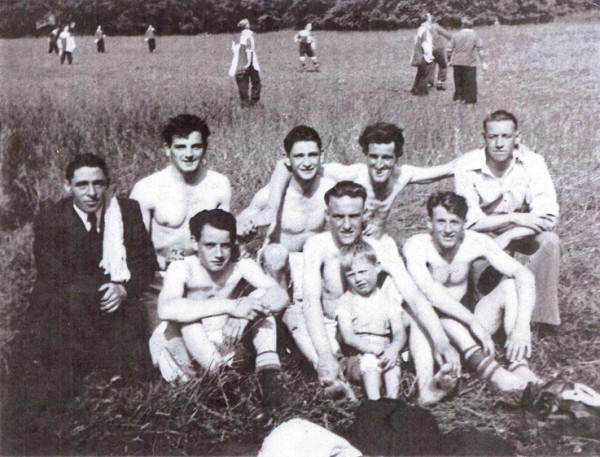
After spending a year working as a messenger boy, on a messenger boy’s bike for Hunt Bros of Grand Canal Street, I got a job driving a lift at College Green for Friends Provident and Century Life Insurance. The building is still there.
I then went to work in the Dublin Port & Docks Board at East Wall Road, where I was sent to the Eastern Breakwater then known as Ben Ghazi, as it was the last point at that side of the Liffey at the time.
The black lighthouse with steps down to the river was there at the very end of the wall facing the T.B home on the Southside. Like the Hailing Station, at the end of the South Wall, at the lock gates facing Tobin’s Pub, both were demolished for progress? Yes the question mark is deliberate, just look at the state of the Hailing Station area now.
But, my story is about the Terns who came back every year to spend the Summer at Eastern Breakwater. The area was reclaimed land and the Dutchman had to pump in a lot of the best, fine sand from Dublin Bay which they were dredging. The Terns were probably from the Arctic Region, a Summer visitor, and it was my first Summer working as a nipper at Eastern Breakwater that I first came across them.
The Terns are an aggressive bird. To get to Eastern Breakwater you walked there on a three-foot wall at the riverside or on bike between the stacks of coal that were stored by the government in case of emergency.
In the sand between the coal, the terns built their homes to hatch the eggs and to rear their chicks. On our way to work, they would dive to attack and scare you off from their nest. The nest was simply a hollow in the sand. When the eggs were in the nest, the dives would be more vigorous, some work mates would walk that half mile to work carrying their bikes over their heads to protect themselves from attack.
As a nipper for the work gang at Ben Ghazi, I would often have to cycle up to East Wall to a shop to get messages for the men; things like cigarettes, cheese, maybe a man had forgotten his lunch and an odd bet in the bookies. On one occasion coming back on my bike, keeping my eye on the Terns, I hit a rock and was sent flying off my bike. As I said earlier, Eastern Breakwater, was the last piece of land at that time and accidents were dealt with there and then.
My memory of a more serious one was of a man who had an accident to his foot – with no transport and him not able to walk, he was put into a wheelbarrow and wheeled to the nearest point to be taken to Jervis Street Hospital. After work, I had reason to go into the city and while crossing O’Connell Street Bridge on the bus, I saw my two workmates coming from Jervis Street Hospital. The injured man, Mick Heffernan was getting a jockey back as he couldn’t walk with his injury. The man carrying him was his good friend Christy Dolan, known locally as ‘Oxo’.
As a boy labourer, when you reached twenty one, you became full-time and were paid full-time wages, you were put into a gang working around Dublin Port Co.
In 1954, I was working on the building of the ocean pier and still ducking the Terns as if it was still Summer time. The Ocean Pier is reclaimed land and Mr. MacManus, our foreman, put me in with the bar benders who did reinforcing of concrete and buildings. As the first roll-on roll-off was being built at Ocean Pier, we were detailed to put reinforcing iron into the building. This building was at the water’s edge so some work was at the top of the building as some was out over the water from the platform. As I was the youngest and able to swim, I was selected to go over the water and on top to put in the iron bars. There was no health and safety then and the Terns were playing games with me.
One very interesting event while on Ocean Pier was the arrival of a Russian timber boat which was to be unloaded. It caused a lot of interest all over Ireland at the time and people were divided as to whether it should have been allowed into Ireland or not. While being unloaded, which took, I think, three days, at the end of the gangway on the ship a sailor always stood guard. We thought this was to stop unauthorised persons from going on board. No such thing. It was to stop crew members jumping ship and seeking asylum.
It wasn’t all work and no play. Dublin Port and Docks Board had a team in the Leinster Senior Soccer League. In the off season, they ran a seven-a-side competition for the Mallagh Cup. This was inter-department and as you can see from the photograph there was a shortage of jerseys. As our game had just finished we had to give our jerseys to the team playing the next match.
So the good news is that the Terns are still around and should be arriving to our shores soon.
In the photo from left to right: Coach Jimmy Allen who worked on the diving bell which can be seen on the South Quay, Paddy Dunne, who became Lord Mayor of Dublin, J.J. McLoughlin who became a great Irish athlete over the one mile, ? and Charlie Farrelly who became an assistant to a tradesman.
Front row: ?, Jack John Caulfield a great player with St. Patrick’s Athletic and me the nipper.
By Jimmy Purdy

